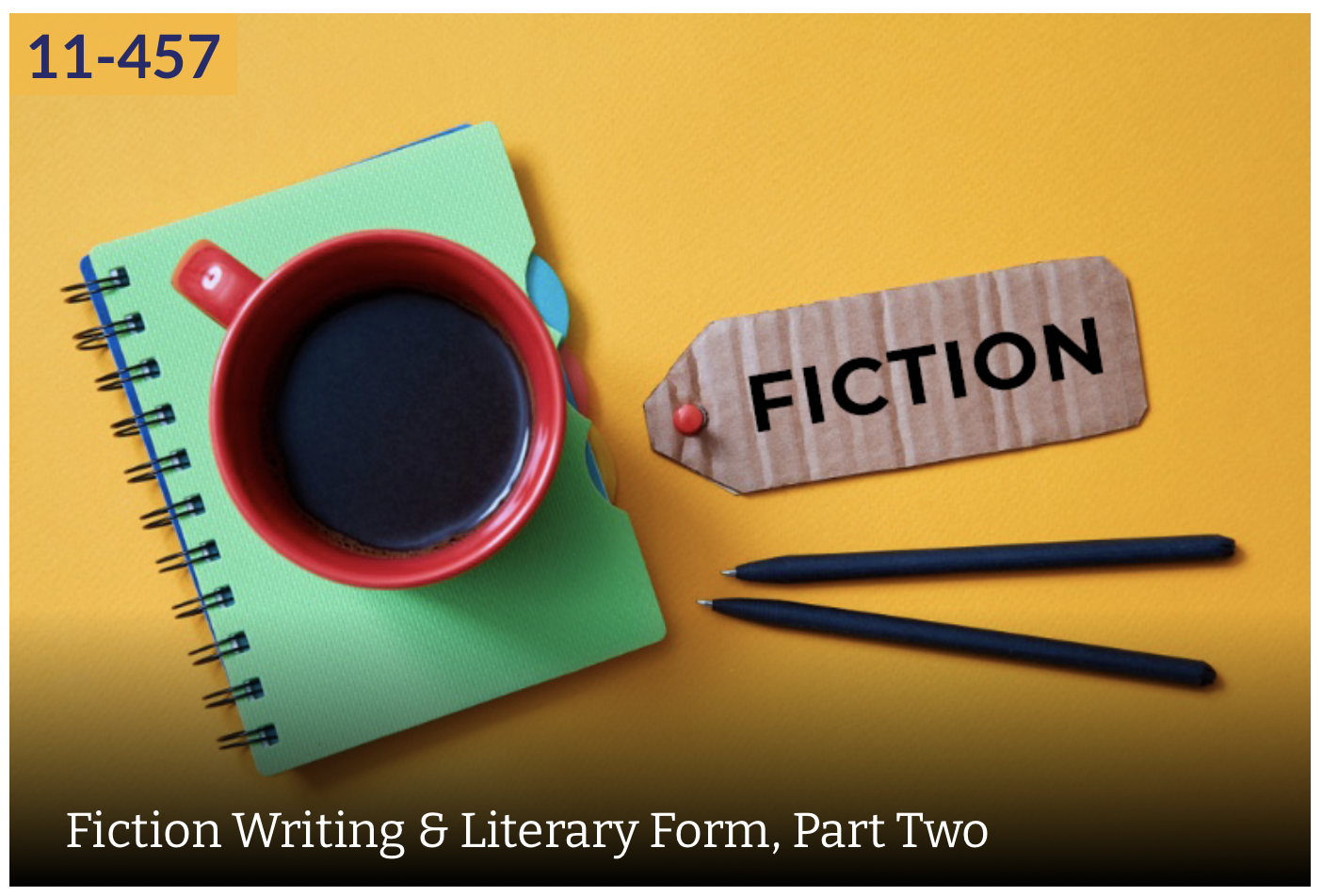
A 12-Week Course with Aquinas Writing Advantage -- where you learn to
write exceptional fiction and learn literature must-haves for
Theme, Style, & Point of View; Conflict & Creating the Breakout Novel;
and Writing the Short Story! (Part 2 of 2)
Do you love stories? Do you want college writing to be easier? When you join this hands-on, high-interest creative writing course, you’ll learn exceptional fiction and literature must-haves and writing know-how for Theme, Style, & Point of View; Conflict & Creating the Breakout Novel; and Writing the Short Story…and learn how to transfer those skills into all of your writing!

|
How to get the most out of Fiction Writing, Part Two, designed by Erin M. Brown, MA, MFA:
|
Accompanying Courses: Students are encouraged to take the accompanying courses, The Hero’s Journey: Mythic Structure for Writers 1 and 2 or Screenwriting 1 and 2 -- in recording. These course can be taken at the same time as the series courses or following the series courses. Students can also sign up for the Authoring a Book Part 1 course available in the Spring, as a companion to the Fiction Writing courses. At any time, you can also access each 4-week section of the course in Unlimited Access.
Total Classes: 12
Duration: 55 minutes
Prerequisite: Required: Writing Essentials 1: Essential Punctuation & Grammar I (HS 9-1) and High School Simplified Writing 1: Strong Foundational Writing Skills (HS 9-2). An alternative to the prerequisite: a passing assessment from the Aquinas Writing Advantage Assessment service. Please contact homeschoolconnections@gmail.com for any questions on permissions.
Suggested Grade Level: 11th grade; however, this LIVE course can be taken at any grade level in high school.
Suggested Credit: One (1) full semester’s credit for Creative Writing, Fiction Writing, or English
This course is created by Erin M Brown, MA, MFA (AKA Erin Brown Conroy/E.B. Conroy).
Course Description: “What makes great fiction? And how can I use fiction writing to make all of my writing dynamic, interesting, and strong?” In this course (the second of two successive courses), you’ll learn what makes excellent fiction writing — and hone your writing skills through the elements and writing techniques of writing an excellent story. Whether you want to write a novel or want to be a dynamic, successful writer in all that you do — learning the elements of theme, writing style, point of view, creating conflict, and “what makes a short story great” allows you to write exceptionally well, raise your written communication skills, become skilled in the elements of literary analysis, and be fully prepared for college and beyond.
Course Outline:
Theme, Style, & Point of View (Class 1 - 4)
In the first 4 weeks, the student learns how to create a dynamic theme, style, and point of view for fiction books of any genre for middle grade, young adult, and adult plots.
Class 1: What is theme and how to use it in your book
Class 2: What is style and how to develop your own style
Class 3: Point of view
Class 4: Integrating theme, style, and point of view to create a dynamic story
Conflict & Creating the Breakout Novel (Class 5 - 8)
In the next four weeks, students learn how to create conflict that drives any story forward as well as how to implement the Christian worldview into story conflict.
Class 5: What makes a great novel and “stakes” (personal and universal)
Class 6: Conflict in the setting, characters, and plot
Class 7: Playing the “what if” game—making your character do the unthinkable
Class 8: Cliffhangers, self-sacrifice, and turning points
Writing the Short Story (Class 9 - 12)
The final four weeks answers, “What makes a short story?” Using famous short stories and dynamic how-to content, students learn how to write a dynamic, publishable short story—including developing ideas for short stories, the similarities and differences between short stories and full-length book writing, and marketing short stories to publications.
Class 9: Defining short stories: micro fiction, flash fiction, short stories, novelettes, and novellas
Class 10: Characteristics of dynamic, saleable short stories
Class 11: Brainstorming, outlining, and forming your short story
Class 12: Who buys and publishes short stories? Short story markets and sales
Course Materials: All materials are provided FREE in the course. Word 2007 or later version or the ability to convert a document to a Word-compatible document. If you do not own Microsoft Word 2007 or a later version, you can use a system such as Google Docs that converts to Word documents FREE.
Homework: Weekly writing assignments with direct feedback from the instructor. There is an estimated three (3) to four (4) hours per week for homework outside of class time that includes reading, writing, and responding to feedback.
- Teacher: E B Conroy
- Teacher: Bonnie Donlon
- Teacher: Aubrey Heki
- Teacher: Michael Stoumbos
- Teacher: Sharon Weis